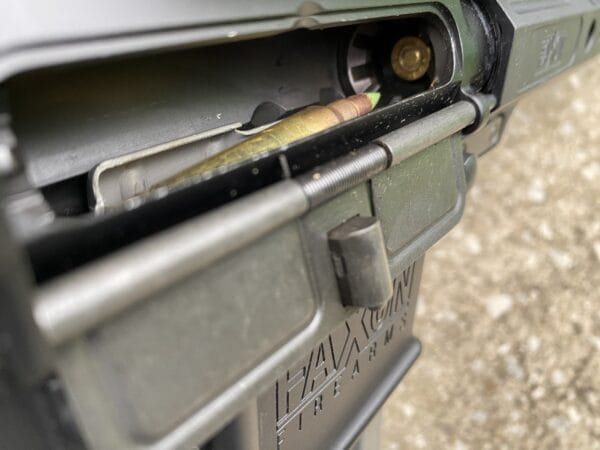
The AR-15 platform, known for its reliability and versatility, is popular among shooters for various applications, from sport shooting to home defense. However, like any mechanical system, it is not immune to malfunctions. Whether at the range or in a critical situation, experiencing a malfunction can be frustrating and, at times, dangerous if not handled properly. Understanding the most common issues and knowing how to quickly and effectively clear them is essential for any AR-15 owner.
In this article, we’ll explore the most common AR-15 malfunctions, such as failure to feed, failure to eject, and double feeds, along with practical tips on addressing each one. These troubleshooting techniques can help ensure your rifle operates smoothly, reducing downtime and keeping you target focused. Always remember to prioritize safety when diagnosing and clearing any firearm malfunction.
Live Inventory Price Checker
|
|
IWI Tavor X95 .223 Rem/5.56 AR-15 Rifle - XB16CA | Palmetto State Armory | $ 2123.99 $ 1912.99 |
|
|
|
IWI Tavor X95 .223 Rem/5.56 AR-15 Rifle, FDE - XFD18 | Palmetto State Armory | $ 1819.99 |
|
|
|
IWI Tavor X95 .223 Rem/5.56 AR-15 Rifle - XB16L | Palmetto State Armory | $ 1943.99 $ 1750.99 |
|
|
|
Colt .223 Rem/5.56 AR-15 Rifle - AR15A4 | Palmetto State Armory | $ 1391.99 $ 1264.99 |
|

Safety First
Before diving into specific malfunctions, it’s important to emphasize the need for safety. If your AR-15 doesn’t fire as expected, remove your finger from the trigger and ensure the firearm is pointed in a safe direction. Avoid attempting to force the weapon to function. Instead, take a moment to assess the situation calmly. With experience, diagnosing and clearing malfunctions will become second nature, but taking it slow and steady is the safest approach for now.
Before we get into the list of the most common malfunctions, check out the following video by Pat McNamara on handling the most common rifle malfunctions. He breaks it down into an easy-to-understand format that everyone can understand.
Failure to Feed (FTF)
Failure to Feed (FTF) is one of the most common malfunctions encountered by AR-15 users. It occurs when a round from the magazine fails to load into the chamber. This malfunction can happen unexpectedly, whether it’s the first shot of the day or midway through a magazine. The good news is that most failure-to-feed issues are straightforward to diagnose and resolve.
Quick Fix:
Tap, Rack, Reassess: Tap the magazine to ensure it’s seated, rack the charging handle to chamber a round, and reassess the rifle’s readiness to fire. If the problem persists, switch out the magazine and check for worn-out springs or bent feed lips.
Preventative Tip: Regularly inspect your magazines. For reliable performance, consider using trusted options like Magpul Gen 3 PMAGs or D&H metal magazines. Why these? The D&H mags don’t just stand up to the challenge; they’re built for it, with anti-tilt followers and a gray Teflon finish that withstands temperature changes and environmental challenges like a champ.
Live Inventory Price Checker
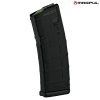
|
Magpul PMAG GEN 2 MOE AR-15 .223/5.56 30 Round Magazine (50 Pack Case) | The Mag Shack | $ 649.99 $ 419.99 |
|
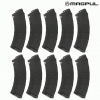
|
Magpul PMAG GEN M3 AK-47 7.62x39 30 Round Magazine (10 Pack) | The Mag Shack | $ 229.99 |
|
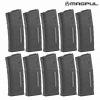
|
Magpul PMAG GEN M3 AR-10 .308/7.62x51 25 Round Window Magazine (10 Pack) | The Mag Shack | $ 199.99 |
|
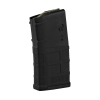
|
Magpul PMAG GEN M3 AR-10 .308/7.62x51 20 Round Magazine (10 Pack) - Black | The Mag Shack | $ 189.99 |
|
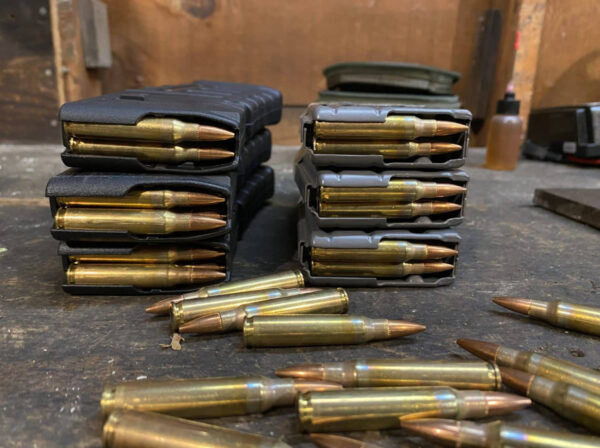
As a Marine infantryman, I’ve carried the M16/M4 across the globe and fired thousands of rounds through them. This experience hasn’t just made me a better shooter; it’s shown me firsthand how often gear can fail, especially magazines. Most malfunctions? They came down to issues with the mags—worn out from use, bent feed lips, damaged followers, or springs that just couldn’t cut it anymore. The fix was usually simple: swap out the faulty magazine. More often than not, that was all it took to get back in action.
Failure to Eject/Extract (FTE)
Failure to Eject (FTE), also known as a “stovepipe” malfunction, occurs when the empty cartridge case of a fired round fails to exit the chamber and gets stuck, usually protruding from the ejection port. Similarly, a Failure to Extract happens when the bolt successfully extracts the spent casing from the chamber but fails to eject it completely, leaving it trapped in the rifle. Both types of malfunctions prevent the next round from being chambered.
Quick Fix:
Immediate Action: Lock the bolt to the rear, drop the magazine, and tilt the rifle to shake out the casing. If stuck, use a cleaning rod to push it out from the muzzle.
Preventative Tip: Regularly clean your bolt carrier group and chamber to prevent carbon buildup. Ensure the extractor and ejector springs are in good condition.
Failure to Fire (FTF)
Failure to Fire (FTF) occurs when the shooter pulls the trigger, but instead of the expected “bang,” there is only a disappointing “click.” This malfunction can be caused by various factors, ranging from ammunition issues to mechanical problems within the rifle. This includes rounds with improperly seated bullets, damaged casings, or bad primers.
Understanding the root causes of FTF and how to address them can save time and prevent unnecessary frustration at the range or in a critical situation.
Quick Fix:
Eject the round and check the primer for a light or absent strike.
Reload and chamber a new round. If the rifle still doesn’t fire, inspect the bolt and firing pin for damage or dirt buildup.
Preventative Tip: Use quality ammunition and keep your rifle clean and lubricated to ensure reliable firing.
Over-Gassed and Under-Gassed Rifles
Whether your AR-15 is over- or under-gassed, gas system issues can lead to a range of malfunctions that affect your rifle’s reliability and performance. Understanding the symptoms and causes of each condition is crucial for diagnosing and resolving related malfunctions effectively.
Over-gassed symptoms: Harsh recoil and failure to eject properly.
Under-gassed symptoms: Failure to lock the bolt back or weak ejection.
Quick Fixes:
Over-Gassed: Install an adjustable gas block or use heavier buffers and springs to slow down the cycling.
Under-Gassed: Check gas block alignment and use higher-quality ammunition. You may also need to switch to a lighter buffer and spring.
Preventative Tip: Keep your gas system clean and consider using an adjustable gas block to fine-tune the system for your ammo and shooting conditions.
Double Feeds
A double feed occurs when two rounds attempt to enter the chamber simultaneously, causing a jam. This usually happens when a live round is stuck behind a previously fired round or its empty casing. Faulty magazines, weak springs, or extractor and ejector failures can cause double feeds.
Quick Fix:
Drop the magazine, lock the bolt to the rear, and use your fingers or a tool to remove the obstructing rounds. After clearing the jam, insert a fresh magazine and cycle the bolt.
Preventative Tip: Ensure your magazine springs are strong and avoid overloading your magazines to reduce tension-related failures.
Bolt Override
A bolt override is a rare but serious malfunction where a live round or spent casing gets stuck above the bolt and below the charging handle. This type of jam can be particularly challenging to clear.
Quick Fix:
Drop the magazine, pull the charging handle back, and lock the bolt to the rear. While keeping pressure on the charging handle, strike the butt of the rifle on a hard surface to dislodge the obstruction.
Preventative Tip: Ensure your ejector and extractor are functioning properly and keep your rifle clean to avoid buildup that could lead to a bolt override.
Stovepipe Malfunction
A stovepipe malfunction, named for how the spent casing sticks vertically out of the ejection port like a stovepipe, occurs when the empty casing fails to fully clear the rifle during ejection. This can disrupt the cycle of operations and prevent the next round from being chambered. Although stovepipes are relatively easy to fix, repeated occurrences can indicate underlying issues that need to be addressed.
Quick Fix:
To eject the casing, perform the “tap, rack, reassess” drill. If it’s still stuck, manually lock the bolt to the rear and clear the obstruction.
Preventative Tip: Keep your rifle clean, especially the bolt carrier group, and ensure your ejector functions correctly. If this happens frequently, consider upgrading your ejector spring.
Conclusion
Experiencing these AR-15 malfunctions can be frustrating, but understanding the most common issues and how to address them will help you become a more proficient and confident shooter. Regular maintenance, proper cleaning, and using quality components are key to minimizing these malfunctions.
From failure to feed to stovepipe malfunctions, each issue has specific causes and solutions. By familiarizing yourself with these troubleshooting techniques, you can quickly diagnose and clear malfunctions, ensuring your rifle remains functional.
About Scott Witner
Scott Witner is a former Marine Corps Infantryman with 2ndBn/8th Marines. He completed training in desert warfare at the Marine Air Ground Combat Center, Mountain Warfare and survival at the Mountain Warfare Training Center, the South Korean Mountain Warfare School in Pohang, and the Jungle Warfare school in the jungles of Okinawa, Japan. He now enjoys recreational shooting, trail running, hiking, functional fitness, and working on his truck. Scott resides in Northeastern Ohio.


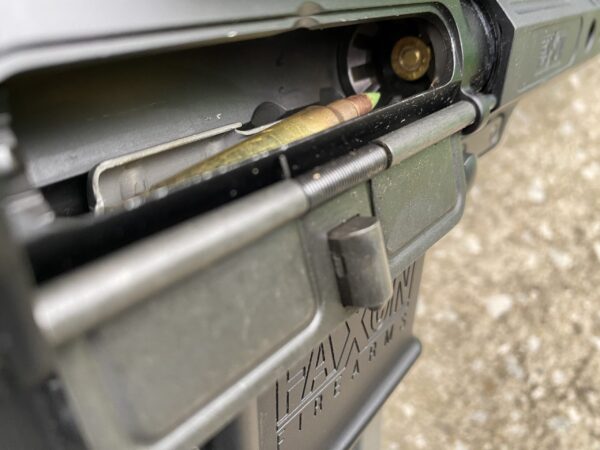
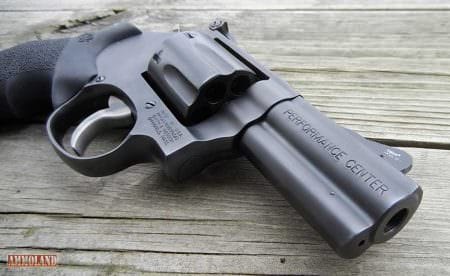

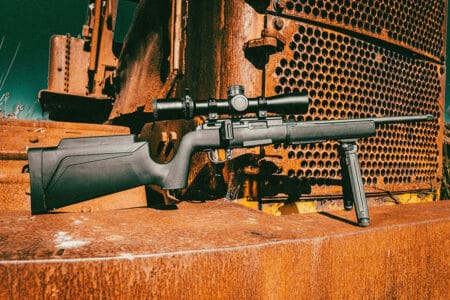

The problems I see most often at the range are caused by dirty chambers, which could be the reason the forward assist is part of most AR-15s. When I see someone using the FA repeatedly I ask if they use a chamber brush, and usually get, “What’s that?”
Most feeding problems with M-16, AR-15, M-4 and M-5 platforms come down to NOT ENOUGH LUBE and lack of cleaning. Past that there are some magazine companies that I avoid. If cycling is an issue take a good look at the gas rings on the bolt — there should be no direct gap to gap openings from ring to ring. Extractor and ejector problems are actually rare but carbon can work it’s way into places that will stop function after THOUSANDS of rounds IF THEY ARE NOT CLEANED AND LUBED. For the machinery that it is and what it was… Read more »
Never had any of these problems and was only trained on a few in the USMC. This is a great video. I saved it and sent it to the wife to watch and save. I put it in my survival file.
I suggest you keep it in yours!
Great article. I’m a retired MSG USAF Security Forces Combat Arms Insteucotr. I’ve cleared thousands of malfunctions and stoppages from the interruption of the cycle of operation. Although some vebage in this article is slightly different. We used TAP-RACK-FIRE but it had the same meaning. Most malfunctions can be caused by ammo and not cleaning the rifle frequently enough. Occasionally a part breakage. Most common are your springs – hammer spring, trigger spring, ejector and extractor spring and sometimes the disconnector spring. Your military type M16 platform rifles did not have an adjustable gas block. It was simply changing the… Read more »
I have occasional jam not mentioned with my 1999 made Colt HBAR A2 Sporter. It isn’t magazine specific. Instead of the described “bolt override the cartridge feed from the magazine gets jammed under the bolt. I suspect it is due to the per M4 barrel extension’s single feed ramp. Clearing the jam is just as difficult to the override
good write
FTF errors MAY be cleared in the method described, but I would state that the most likely fault is solely an improperly seated magazine, so a round wasn’t chambered when the charging handle when first pulled on a new mag. To proceed by racking the charging handle after tapping tha mag, without visually verifying that a round only partially fed and then the loose mag dropped slightly, is to possibly strip a second round out of the mag up under the first round partially chambered, now resulting in a double feed and jam. If you have a failure to feed,… Read more »
The initial year of M-16 production the weapon was issued to US forces as a maintenance-free, all weather, combat rifle. And it was the most attractive rifle ever seen. But the flashy system was designed with no forward assist. Therefor when the rifle seized, it required disassembly to correct it. But by then, reports were arriving that the weapon was flawed in a list of aspects. Sensitive to dust, shock, moisture and in instances drenched in seawater [Marines] the weapon had been reported to explode. It was suspected that the United States had mass produced, and then went to war… Read more »
I think the two biggest causes of malfunctions for the AR15 series are people using under loaded, out of spec cheap foreign ammo… Wolf is probably the best or worst example, and the gun doesn’t work, and people think their AR15 doesn’t work. No, out of spec ammo doesn’t work. Most European 5.56 ammo isn’t even loaded to minimum .223 Rem SAAMI specs. I’ve shot tens of thousands of rounds of Win LC M855, and sure, I’ve had few problems, but parts, namely mags going kaput, not ammo caused issues. Also the other biggest problem I’ve seen is people messing… Read more »
The precautions with the M-16’s besides the chronic cleaning was to load the ammo in the mags very slow and then load the mags in the weapon even slower.